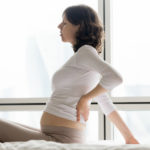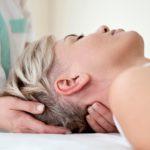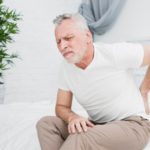
Margaux Loyer
Diploma in Beauty and Massage Therapy, Certificates in Deep Tissue and Myofascial Release, RYT 200 Yoga Teacher, Bachelor of Health Science in Acupuncture
The nervous system (NS) is the body’s communication network, transmitting information between different parts of the body. It regulates everything from breathing, heart rate, and what we see to thoughts and feelings.
By exploring and understanding the nervous system, particularly the sympathetic (SNS) and parasympathetic (PNS) branches, we can better understand the balance between stress and relaxation, which is essential for overall well-being.
The different branches of the nervous system
To understand how the NS works, we must look into its different parts and sub-systems. The nervous system is categorised into two main components.
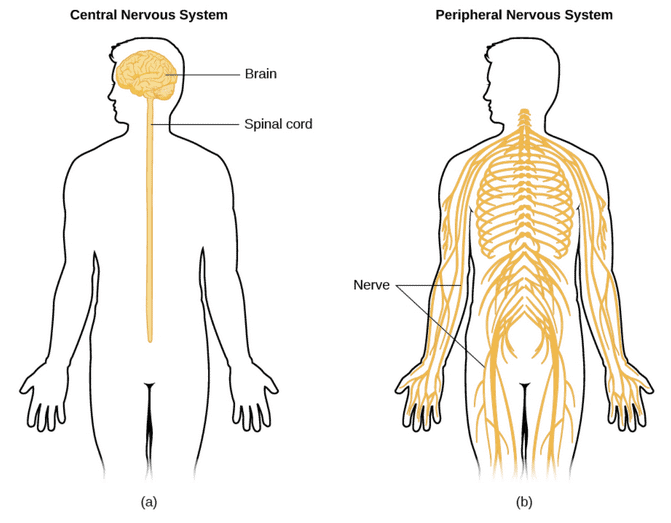
Central Nervous System (CNS)
The CNS includes the brain and spinal cord. It serves as the body’s command centre, processing sensory information and dispatching responses.[1]
Central Nervous System includes our brain and spinal cord
It governs:
- Conscious thoughts (decision-making, reasoning, memory, and awareness)
- Emotions (mood, stress responses, and psychological well-being)
- Muscle control (voluntary and involuntary movements, including reflexes)
- Heart function (heart rate and rhythm)
- Digestive system (gut motility and digestion)
- All other systems (key role in hormonal regulation, immune response, and overall homeostasis)
Damage to the CNS can result in severe impairments like paralysis or memory loss, highlighting its critical role in maintaining health, functionality, and overall quality of life.
Peripheral Nervous System (PNS)
The PNS consists of the nerves that branch out from the brain and spinal cord, connecting the CNS (the brain and spinal cord) to the rest of the body. The PNS is divided into two sub-systems.
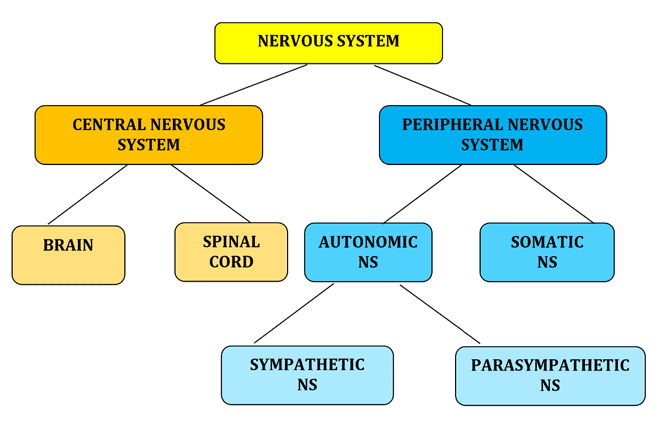
The Somatic Nervous System
The Somatic Nervous System controls voluntary movements by transmitting signals from the CNS to skeletal muscles. For instance, reaching for a cup of coffee involves the somatic nervous system, as the brain sends signals to the arm and hand muscles to perform this deliberate action.
The Autonomic Nervous System
The Autonomic Nervous System regulates involuntary functions such as:
- heartbeat
- digestion
- breathing
Indeed, we do not consciously think of breathing or making our heart beat, unlike how we decide to reach for a cup of coffee.
The ANS is further divided into two divisions:
- The Sympathetic Nervous System (SNS) (activated by stress, prepares the body for “fight or flight” responses)
- The Parasympathetic Nervous System (PNS) (promotes relaxation and is often referred to as the “rest and digest” state)
To understand how we can achieve balance, reduce stress and achieve more relaxation in our lives, let’s focus on the Autonomic Nervous System and its two systems: the Sympathetic NS and the Parasympathetic NS.
The Autonomic Nervous System
As mentioned, the ANS maintains homeostasis by regulating involuntary physiological functions. It balances the SNS and PNS responses to external stimuli, ensuring the body can react to stressors while also returning to a state of calm and recovery.
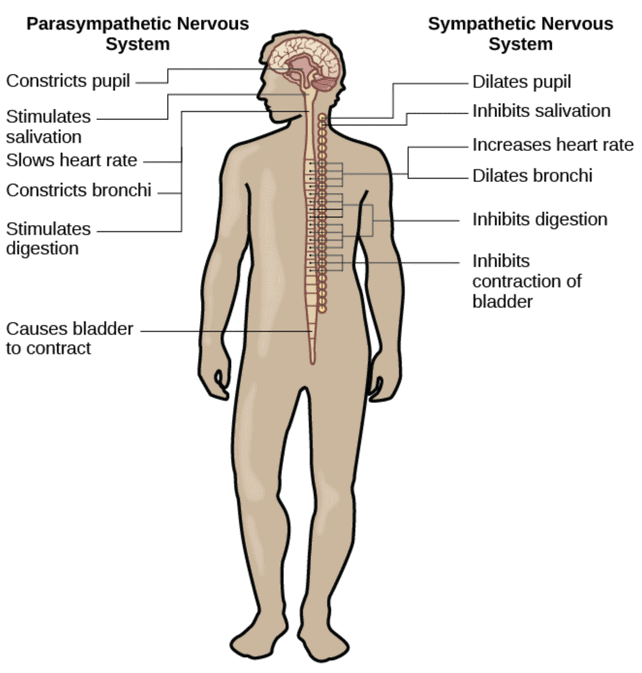
Sympathetic Nervous System (SNS)
The Sympathetic Nervous System (SNS) is integral to our body’s “fight or flight” response, a mechanism that has been essential for human survival.
Immediate physical threats, such as predator attacks, activate the SNS to prepare the body for rapid action, such as running. This preparation involves increasing heart rate, breathing, elevating blood pressure, dilating pupils, and the release of stress hormones like adrenaline and cortisol, all aimed at enhancing physical performance to either confront or escape danger.
At the same time, functions such as digestion, reproduction, elimination, and healing are temporarily suppressed. After all, when survival is threatened, the body prioritises escape over digestion or repair.
This survival mechanism kept our ancestors alive when faced with life-threatening situations.
In modern times, while physical threats are less common, psychological stressors such as financial worries, social pressures, work demands, or family issues, can activate the SNS in much the same way.
The body responds with increased heart rate, hormone release, and suppressed digestive and reproductive functions, even though these stressors don’t require a physical response.
For instance, a study published in the Journal of Occupational Health found that workers exposed to loud occupational noise during the day experienced elevated heart rates and increased morning cortisol levels, indicating sustained SNS activation due to stress.[2]
Another study examines how psychological stress impacts male fertility by affecting the L-arginine-nitric oxide (NO) pathway, which is regulated by the autonomic nervous system (ANS). This pathway plays a role in sperm motility and semen quality.[3]

Based on this study, stress negatively affected sperm quality, significantly reducing concentration, motility, and motility index. The study shows that stress increases NO levels while decreasing sperm concentration and motility, linking autonomic dysfunction to poor sperm quality through changes in this pathway.
Parasympathetic Nervous System (PNS)
The parasympathetic nervous system (PNS) functions as the counterpart to the sympathetic nervous system (SNS). While the SNS prepares the body for action in “fight or flight” mode, the PNS facilitates relaxation, recovery, and energy conservation—often referred to as the “rest and digest” state.
The PNS promotes:
- digestion
- reproduction
- elimination (stool and urine)
- healing by lowering heart rate, breathing rate and blood pressure
It allows the body to redirect energy toward essential restorative processes.
Research suggests that PNS activation plays a crucial role in digestive health, particularly in conditions like irritable bowel syndrome (IBS).
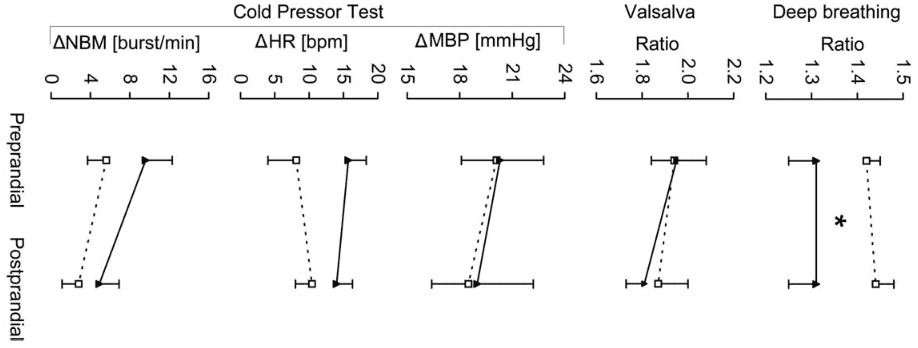
A study published in Clinical Autonomic Research examined autonomic function in IBS patients and found that they exhibited reduced parasympathetic reactivity compared to healthy individuals.[4]
The RRmax/RRmin ratio is used to assess parasympathetic nervous system (PNS) activity, as deep breathing naturally increases PNS influence, slowing the heart rate.
Based on this figure, the RRmax/RRmin ratio in IBS patients is lower. This suggests reduced parasympathetic reactivity, meaning their bodies are less able to regulate heart rate variability (HRV) in response to breathing, which may contribute to IBS symptoms.
These findings support that diminished PNS activity may contribute to IBS symptoms, and interventions aimed at enhancing PNS activation could be beneficial in managing the condition.
The balance between Sympathetic Nervous System (SNS) and Parasympathetic Nervous System (PNS)
The Sympathetic Nervous System (SNS) and Parasympathetic Nervous System (PNS) work together to maintain balance in the body.
The SNS mobilises energy for action, suppressing non-essential functions like digestion and reproduction, while the PNS promotes relaxation, healing, and recovery.
Health depends on the balance between these systems, known as autonomic tone.
Interestingly, while excessive SNS activity can impair reproductive function, some SNS activation is essential for fertility.
A study in Medical Hypotheses suggests that inadequate SNS dominance during the luteal phase may disrupt key physiological adaptations needed for successful implantation and pregnancy.[5]
Similarly, another research indicates that moderate SNS activation enhances female sexual arousal, while too much or too little reduces it.[6]
This study is the first to identify a curvilinear relationship between the SNS activation and women’s sexual arousal.
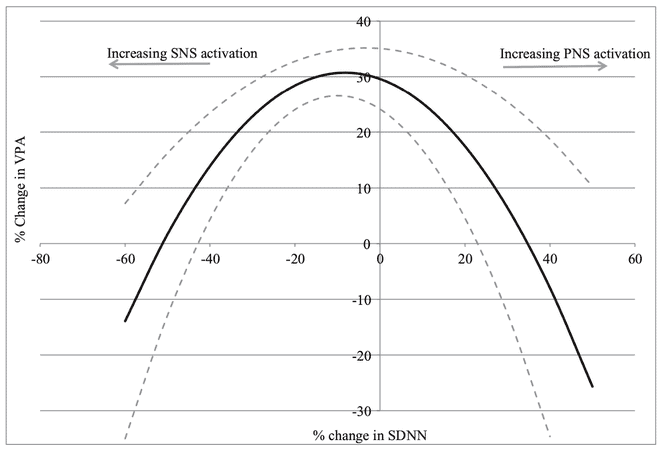
This relationship aligns with the Yerkes-Dodson curve (below), where moderate stress/alertness leads to optimal performance, whereas extreme, or insufficient levels of stress (such as in PNS dominance), can reduce arousal.[7]
RELATED — Understanding Stress: The Silent Killer
Despite some limitations, such as the absence of postmenopausal women in the sample, the study suggests that SNS activation plays a more significant role in female sexual arousal than previously thought.
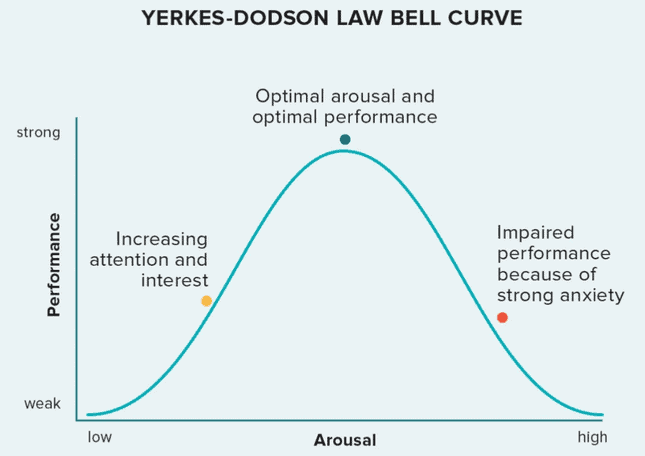
Moderate stress leads to optimal performance
This balance between the SNS and PNS also plays a role in heart health. Since the SNS increases heart rate and excitability of the heart, high SNS activation is commonly linked to irregular heartbeats (arrhythmias).
However, excessive PNS can also cause irregular heart beat. This is the case in individuals with Brugada syndrome who tend to experience more irregular heartbeats at night, when parasympathetic (PNS) activity is dominant, compared to the daytime when sympathetic nervous system (SNS) activity is higher.[8]
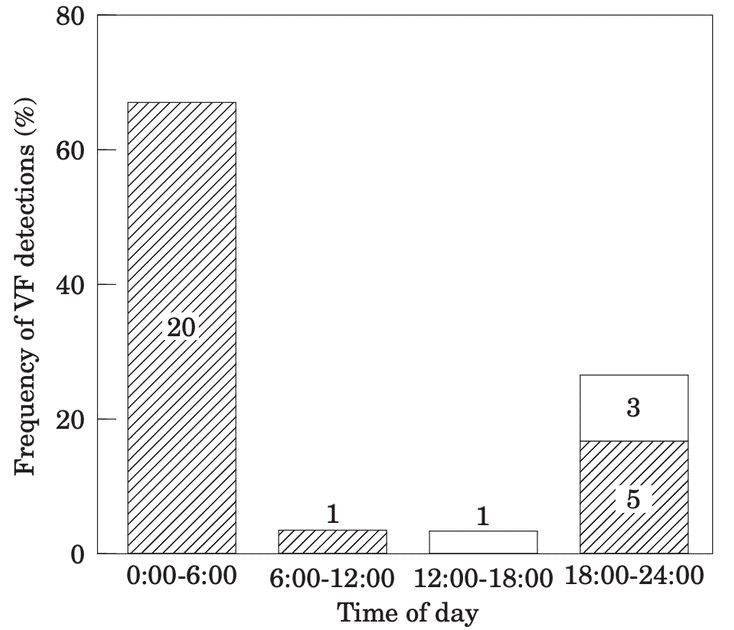
Importantly, SNS activation can trigger a subsequent PNS response. When the body faces a stressor such as cold exposure, the SNS heightens alertness, increasing heart rate, blood pressure, and stress hormones.[9] However, after the stressor is removed, the body shifts to PNS dominance to recover, reducing inflammation, restoring digestion, and facilitating healing.
For example, a 2009 study highlights cold water immersion (CWI) after intense exercise in the heat enhances parasympathetic reactivation.
The study found that HF power (high-frequency power), which is linked to parasympathetic activity and cardiac regulation, was lower after intense exercise in normal conditions, indicating less recovery.
However, after cold water immersion (CWI), HF power remained higher, signaling better recovery and relaxation, especially after the second round of exercise.[10]
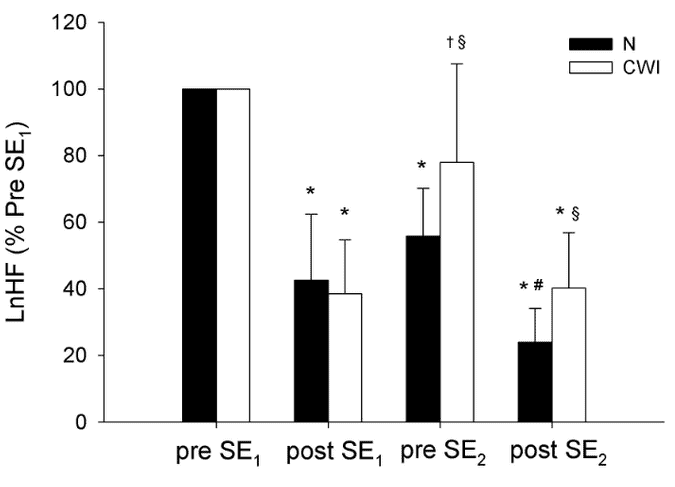
This study supports the idea that cold exposure boosts parasympathetic activity after exercise, challenging the belief that it solely activates the sympathetic system through responses like vasoconstriction.
Instead, the findings highlight autonomic balance, showing that controlled stressors like CWI can strengthen both systems, enhancing recovery, resilience, and overall cardiovascular health.[10]
Similarly, another study investigated the effect of cold water face immersion (CWFI) on post-exercise parasympathetic reactivation. The results demonstrated that CWFI led to faster parasympathetic reactivation, as indicated by higher LnHF (Log-transformed High-Frequency power), Ln rMSSD (Log-transformed root mean square of successive differences), and heart rate recovery values compared to the control condition.[11]
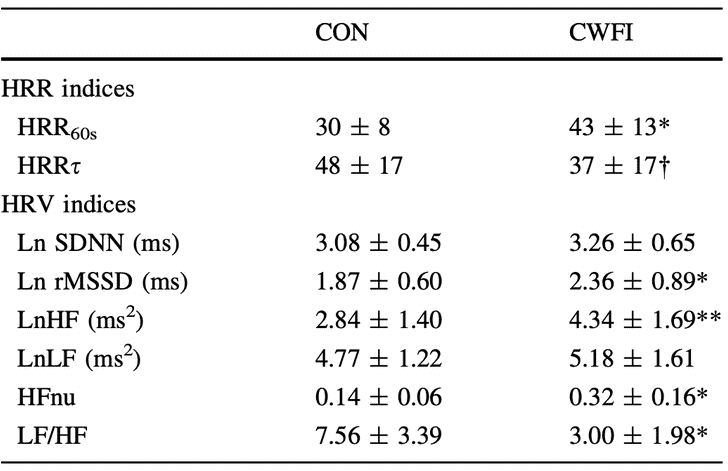
This explains why cold plunges, despite inducing an initial short acute stress, ultimately promote healing and resilience.
A balanced autonomic tone is key to well-being. While PNS activation promotes relaxation, the SNS triggers its rebound for recovery. Controlled stressors like:
- cold plunges
- exercise
- breathwork
enhance both systems, boosting resilience.
True health relies on cycling between activation and recovery, optimising fertility, cardiovascular function, and overall adaptability.
References
(1) Grose-Fifer, J., Spielman, R. M., Dumper, K., Jenkins, W., Lacombe, A., Lovett, M., & Perlmutter, M. (2023). Parts of the nervous system. Introduction to Psychology (A Critical Approach). Available from: https://pressbooks.cuny.edu/jjcpsy101/chapter/parts-of-the-nervous-system/
(2) Batmanabane, G., & Ramachandran, A. (2003). Effect of acute exposure to loud occupational noise during daytime on the nocturnal sleep architecture, heart rate, and cortisol secretion in healthy volunteers. Journal of Occupational Health.
(3) Braz J Med Biol Res. (2006). Effect of psychological stress on the L-arginine-nitric oxide pathway and semen quality. Biochemistry and Molecular Biology. Available from: https://www.scielo.br/j/bjmbr/a/HNwzHpsDqXGQdX4zTjN7ydy/?lang=en
(4) Van Orshoven, N. P., Andriesse, G. I., van Schelven, L. J., Smout, A. J., Akkermans, L. M. A., & Oey, P. L. (2006). Subtle involvement of the parasympathetic nervous system in patients with irritable bowel syndrome. Clinical Autonomic Research. Available from: https://sci-hub.se/10.1007/s10286-006-0307-x
(5) Yun, A. J., Bazar, K. A., & Lee, P. Y. (2004). Autonomic dysfunction may be an under-recognised cause of female fertility disorders. Medical Hypotheses.
(6) Lorenz, T. A., Harte, C. B., Hamilton, L. D., & Meston, C. M. (2011). Evidence for a curvilinear relationship between sympathetic nervous system activation and women’s physiological sexual arousal. Psychophysiology. Available from: https://sci-hub.se/https://doi.org/10.1111/j.1469-8986.2011.01285.x
(7) Pietrangelo, A. (2020). What the Yerkes-Dodson Law says about stress and performance. Healthline. Available from: https://www.healthline.com/health/yerkes-dodson-law#stress-performance-bell-curve
(8) Shen, M. J., & Zipes, D. P. (2014). Role of the autonomic nervous system in modulating cardiac arrhythmias. Circulation Research. Available from: https://www.ahajournals.org/doi/10.1161/circresaha.113.302549
(9) Matsuo, K. (1999). The circadian pattern of the development of ventricular fibrillation in patients with Brugada syndrome. European Heart Journal. Available from: https://sci-hub.se/https://doi.org/10.1053/euhj.1998.1332
(10) Buchheit, M., Peiffer, J. J., Abbiss, C. R., & Laursen, P. B. (2009). Effect of cold water immersion on postexercise parasympathetic reactivation. American Journal of Physiology-Heart and Circulatory Physiology.
(11) Al Haddad, H., Laursen, P. B., Ahmaidi, S., & Buchheit, M. (2009). Influence of cold water face immersion on post-exercise parasympathetic reactivation. European Journal of Applied Physiology.



